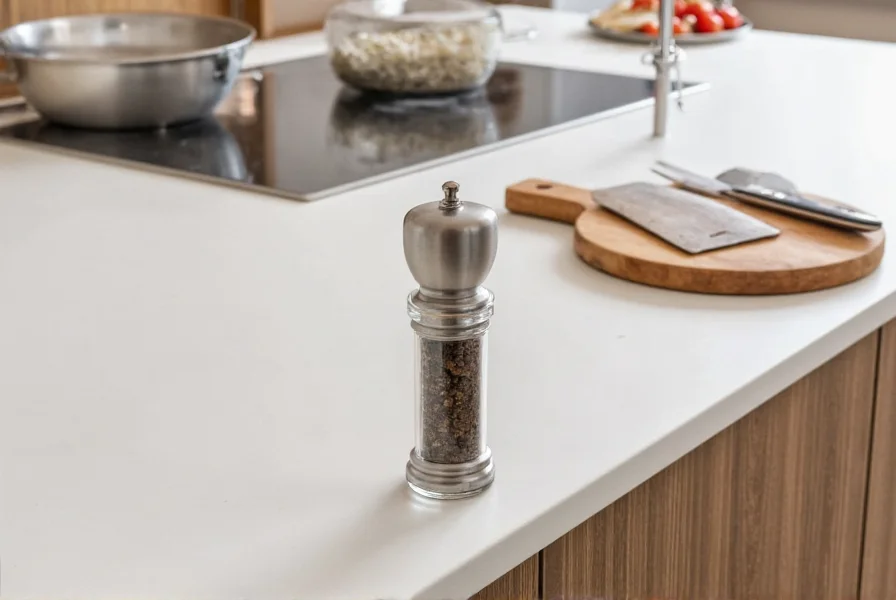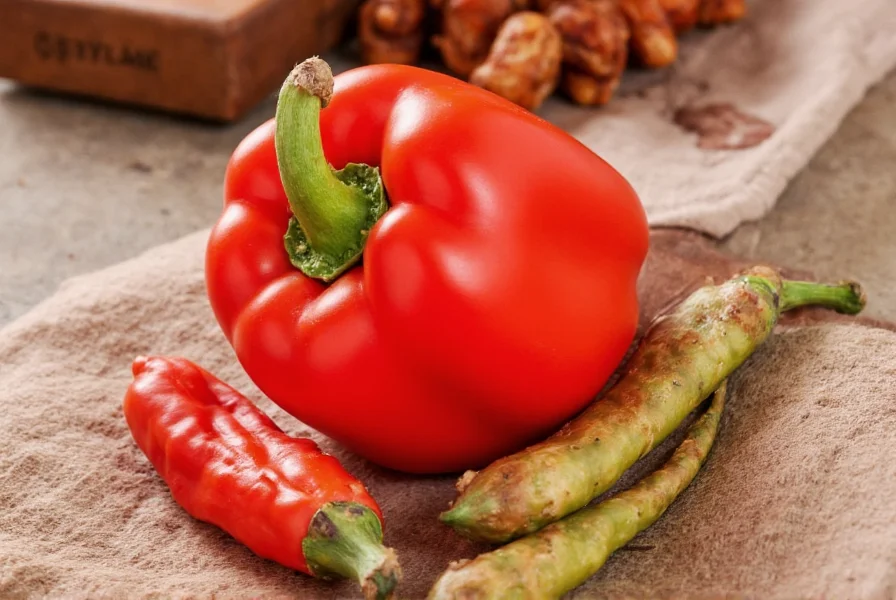Understanding the practical value of a pepper rest begins with recognizing common kitchen frustrations. Every home cook has experienced the annoyance of pepper grinder residue staining countertops or the inconvenience of searching for a clean spot to place the grinder mid-recipe. These seemingly minor issues accumulate, disrupting cooking flow and creating unnecessary cleanup tasks.
What Exactly Is a Pepper Rest?
A pepper rest serves as a dedicated landing spot for your pepper grinder when not actively seasoning food. Unlike makeshift solutions like placing the grinder on a paper towel or random dish, purpose-built pepper rests provide stability and containment. The standard design incorporates a shallow depression or circular cradle that accommodates most grinder sizes while capturing stray pepper particles.
Professional chefs and home cooks alike appreciate how these simple accessories maintain kitchen organization. When evaluating different types of pepper rests for home kitchens, consider that quality models prevent grinder slippage and feature non-porous materials that resist staining from oils and spices.

Practical Benefits Beyond Basic Functionality
The advantages of using a dedicated pepper rest extend beyond mere convenience. From a food safety perspective, keeping your grinder elevated on a clean surface reduces cross-contamination risks. When your grinder isn't sitting directly on potentially contaminated countertops, you minimize the transfer of bacteria to your seasoning tool.
Consider these often-overlooked benefits of using a pepper rest in professional cooking:
- Maintains consistent seasoning control by keeping the grinder ready at hand
- Prevents accidental over-grinding that occurs when searching for a placement spot
- Protects delicate grinder mechanisms from damage when placed on hard surfaces
- Creates a more organized cooking station that supports efficient workflow
Material Considerations for Long-Term Use
When selecting the right pepper rest for your kitchen, material choice significantly impacts both functionality and longevity. Each common material offers distinct advantages:
| Material | Advantages | Considerations |
|---|---|---|
| Ceramic | Attractive designs, non-porous surface, heat-resistant | Can chip if dropped, heavier than other options |
| Wood | Natural aesthetic, gentle on grinder bases, lightweight | Requires occasional oiling, not dishwasher safe |
| Stainless Steel | Durable, modern look, dishwasher safe | Can show water spots, may slide on smooth surfaces |
| Silicone | Non-slip, flexible storage, vibrant colors | May retain odors, less traditional appearance |
For those exploring best pepper rest options for different kitchen styles, consider how your choice complements existing tools. A rustic kitchen might benefit from a wooden rest that matches cutting boards, while contemporary spaces often pair well with minimalist stainless steel designs.
Proper Usage Techniques for Maximum Benefit
Simply having a pepper rest isn't enough to realize its full potential. Proper placement within your cooking workflow makes the difference between an occasionally used accessory and an indispensable tool. Position your pepper rest within easy reach of your primary cooking surface but away from direct heat sources.
When using your kitchen pepper rest during meal preparation, develop the habit of returning the grinder immediately after each use. This prevents the common scenario where you set the grinder down temporarily and then can't locate it when needed again. For optimal hygiene, clean your pepper rest regularly—especially if you notice accumulated pepper residue that could attract pests.

Alternative Solutions and Creative Applications
While dedicated pepper rests offer the most effective solution, resourceful cooks have developed several alternatives. Small ramekins, decorative bottle caps, or even repurposed bottle stoppers can serve as makeshift rests. However, these improvised solutions often lack the tailored design that prevents grinder slippage and contains mess effectively.
Some innovative cooks have discovered multiple uses for pepper rest accessories beyond their intended purpose. Chefs sometimes use them to hold small tasting spoons, contain herb stems during chopping, or serve as miniature dipping sauce dishes. This versatility makes them valuable additions to any well-equipped kitchen.
Maintenance and Care Guidelines
Proper care extends the life of your pepper rest and maintains kitchen hygiene. Most models require only basic maintenance:
- Wash after each use with mild soap and water
- Avoid abrasive cleaners that could damage surfaces
- Dry thoroughly before storing to prevent moisture buildup
- Store in a designated spot to ensure availability when needed
For those concerned about keeping pepper rests clean in busy kitchens, consider having multiple rests available for rotation during extended cooking sessions. This practice prevents the temptation to skip cleaning during hectic meal preparations.
Integrating Pepper Rests into Kitchen Organization Systems
The most efficient kitchens incorporate pepper rests as part of a comprehensive organization strategy. Position your rest within your seasoning station alongside salt containers, oil dispensers, and other frequently used condiments. This creates a dedicated zone for flavor adjustments that streamlines your cooking process.
When planning your kitchen workflow with pepper rest placement, remember that accessibility directly impacts usage. If your rest is buried in a drawer or stored inconveniently, you're less likely to use it consistently. The goal is to make proper grinder placement as natural as reaching for your next ingredient.
What is the primary purpose of a pepper rest?
The primary purpose of a pepper rest is to provide a dedicated, stable surface for placing pepper grinders between uses. This prevents mess from stray pepper grains, maintains kitchen hygiene by keeping the grinder off potentially contaminated surfaces, and ensures the grinder remains readily accessible during cooking.
Can I use a regular dish instead of a dedicated pepper rest?
While you can use a small dish as a makeshift solution, dedicated pepper rests offer specific advantages. They're designed with the perfect size and shape to hold most pepper grinders securely, often featuring non-slip bases and shallow depressions that contain stray pepper grains more effectively than standard dishes.
How often should I clean my pepper rest?
You should clean your pepper rest after each cooking session. Regular cleaning prevents the buildup of pepper residue that can attract pests and maintains kitchen hygiene. For ceramic or stainless steel models, simple washing with mild soap and water suffices, while wooden rests may require occasional oiling to maintain their condition.
Are there pepper rests that work with all grinder sizes?
Most standard pepper rests accommodate common grinder sizes, but some specialty models feature adjustable cradles or wider bases for larger grinders. When selecting a pepper rest, consider your specific grinder dimensions. Universal designs typically work for grinders between 1.5-3 inches in diameter, which covers most standard kitchen pepper mills.











 浙公网安备
33010002000092号
浙公网安备
33010002000092号 浙B2-20120091-4
浙B2-20120091-4